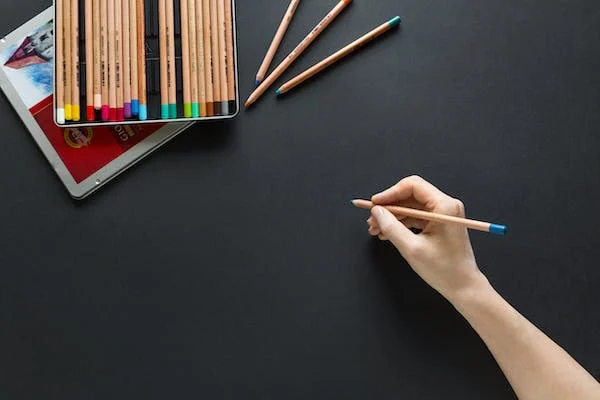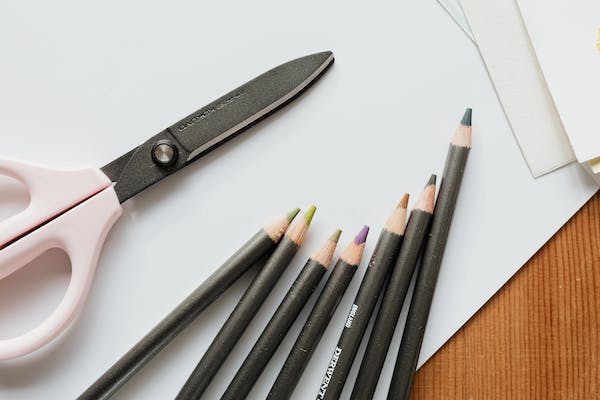Creativity is an elusive and mesmerizing force that enriches our lives with innovation and imagination. It’s a gift that dwells within each of us, waiting for the right moment to flourish.
Yet, many people grapple with a simple yet perplexing question of how to be more creative?
The answer might lie in an unexpected place – the world of sketching.
In this exploration, we embark on a journey to unravel the intricate relationship between creativity and sketching. We’ll investigate how you can recognize your own creative potential, why some individuals face creative blockades, and whether it’s possible to cultivate creativity intentionally and generally how to be more creative.
Along the way, we’ll discover how sketching can be a powerful tool to enhance your creativity, and we’ll dive into three captivating sketching exercises designed to unlock your artistic and innovative potential.
Table of contents
How Can I Tell If I’m Creative?
Before delving into the creative realm of sketching, let’s first contemplate how one can recognize their own creative inclinations and how to be more creative.
Creativity isn’t confined to a single mold; it manifests in diverse forms and expressions.
Here are some questions to help you gauge your creative tendencies:
- Are You a Natural Problem-Solver?
Creative individuals often excel at finding inventive solutions to complex challenges. If you find joy in tackling problems from various angles, you may possess a creative mind.
- Do You Embrace Novelty?
Creative souls tend to be open to new experiences, ideas, cultures, and perspectives. An eagerness to explore the uncharted is a hallmark of creative potential.
- Can You Adapt Gracefully to Change?
Creativity thrives in adaptable minds. If you’re comfortable with change and can pivot quickly, you might possess a natural creative flair.
- Is Your Mind a Playground for Imagination?
Frequent daydreaming and a vivid imagination often indicate a fertile creative landscape within your mind.
- Do You Enjoy Artistic Activities?
An innate attraction to artistic pursuits, such as sketching, painting, or writing, is often a clear sign of your creative inclination.
If any of these questions resonate with you, you’re already on the path of creativity. The key is to nurture and cultivate these qualities.
Why Am I So Non-Creative?
For some, creativity may seem like a distant star, just out of reach. Numerous factors can contribute to creative stagnation:
- Fear of Failure:
The fear of making mistakes or failing can stifle creativity. Creative individuals often view mistakes as stepping stones to growth and innovation.
- Routine and Repetition:
Monotonous daily routines can suppress creativity. Creative minds thrive in diverse and stimulating environments.
- Negative Self-Perception:
Low self-esteem or self-doubt can smother creative expression. Cultivating a positive self-image is crucial for unlocking creativity.
- Lack of Inspiration:
A dearth of exposure to new ideas or experiences can lead to creative stagnation. Seeking inspiration from various sources can reignite your creative spark.
- External Pressures:
External pressures, such as tight deadlines or rigid expectations, can smother creativity. Granting yourself the freedom to explore and experiment without constraints can be liberating.
Warning: Undefined array key "title" in /home/amphyblogdev/domains/amphy-blog-dev.adcore.com/public_html/wp-content/themes/sentrysite-corporate/inc/courses-wi.php on line 29
Creativity isn't confined to a single mold; it manifests in diverse forms and expressions.
Can I Train Myself to Be Creative?
The encouraging news is that creativity isn’t an innate trait; it’s a skill that can be honed and refined over time.
Here are some strategies to guide you on your journey toward becoming a more creative individual:
- Practice Mindfulness:
Being fully present and engaged in your surroundings can help you notice details and connections that spark creative ideas.
- Divergent Thinking:
Encourage divergent thinking by brainstorming multiple solutions to a problem without judgment. Unfiltered idea generation often leads to creative breakthroughs.
- Seek Variety:
Exposure to diverse experiences, cultures, and perspectives can expand your creative horizons. Travel, read, and engage in new activities to broaden your outlook.
- Embrace Failure:
Don’t fear making mistakes or encountering setbacks. Failure is often a stepping stone to creative discoveries.
- Collaborate:
Collaborating with others can introduce fresh perspectives and ideas. Engaging in discussions and bouncing ideas off peers can stimulate creative thinking.

Does Sketching Improve Creativity?
Now, let’s dive into the heart of our exploration: the connection between sketching and enhancing creativity.
Sketching is a versatile and accessible medium of creative expression that can significantly amplify your imaginative capabilities.
Here’s why:
- Sketching allows you to externalize your thoughts and ideas, making them tangible and easier to explore and develop.
- Sketching serves as an excellent tool for brainstorming. It encourages the rapid generation of visual concepts, fostering innovative thinking.
- Sketching aids in problem-solving by visualizing potential solutions and facilitating the identification of the most promising ones.
- Engaging in sketching provides a means of self-expression that boosts self-confidence and nurtures creativity.
- The act of sketching can reduce stress and anxiety, creating a more conducive mental environment for creativity to flourish.
You might also like: 151 Drawing Ideas with Examples for Inspiration
How to Improve Creativity with Sketching
Now that we’ve established the significance of sketching in enhancing creativity, let’s explore how you can harness this creative medium to elevate your imaginative prowess:
- Doodle Freely:
Dedicate time each day to doodle without any specific objective. Allow your hand to move freely on the paper, letting your subconscious thoughts flow onto the page. These unstructured doodling sessions can unveil unexpected creative insights.
- Mind Mapping:
Employ sketching as a tool for mind mapping. Start with a central idea and draw branches representing related thoughts, ideas, or connections. Mind maps visually represent complex concepts, aiding in refinement and uncovering new connections.
- Storyboarding:
For creative projects like storytelling or presentations, use sketching to create storyboards. Sketch key scenes or concepts, arranging them in a sequence. This visual representation helps refine ideas and identify narrative gaps.
- Combine Elements:
Experiment with merging different elements in your sketches. Mix and match unrelated objects or ideas to create something entirely new and imaginative. The act of juxtaposition often sparks novel creative insights.
- Embrace Imperfection:
Release the pressure of creating perfect or polished sketches. Embrace imperfections, using them to your advantage. Sometimes, the raw and unfinished nature of a sketch can exude its charm and creativity.
You might also like: The List of Useful Online Writing Blogs to Boost and Practice Your Essay Writing

Three Engaging Sketching Exercises to Boost Creativity
To kickstart your creative journey through sketching, here are three captivating exercises that encourage innovation:
- Blind Contour Drawing:
Select an object or subject and draw it without glancing at your paper. Focus solely on the contours and details of the subject as your hand follows its outlines. This exercise encourages a fresh perspective and enhances observational skills.
- Collage Sketching:
Collect a diverse range of images, textures, or objects from magazines, newspapers, or your surroundings. Arrange them on a page and use sketching to integrate these disparate elements into a cohesive composition. This exercise challenges you to discover creative connections between unrelated items.
- Free Association Sketching:
Start with a random word or concept and sketch whatever comes to mind when you think about it. Let your mind wander freely and capture your thoughts on paper. This exercise promotes spontaneous creativity and can yield surprising results.
Conclusion: Embrace Your Inner Artist
Our exploration of creativity through sketching has uncovered a dynamic partnership between artistic expression and imaginative thinking.
Sketching, a versatile and accessible medium, empowers us to visualize thoughts, brainstorm, and problem-solve, all while boosting self-confidence and reducing stress. This creative journey doesn’t conclude here; it’s just the beginning. Whether you’re a seasoned artist or a beginner, sketching offers a toolset to explore uncharted creative territories. The key is to embrace imperfections, experiment, and let creativity flow without judgment.
Creativity is not a destination but a lifelong journey. It’s about pushing boundaries, embracing new perspectives, and continually redefining possibilities. Our quest for creativity through sketching is a testament to the untapped potential within you.
Allow your sketches to tell your unique story, express your voice, and inspire the world around you.
Let your sketchbook be your companion on this remarkable voyage of self-discovery and creativity, igniting a creative flame that burns brighter than ever before.
Related Content
Meet Amphy
The largest marketplace for live
classes, connecting and enriching
humanity through knowledge.
Related Articles